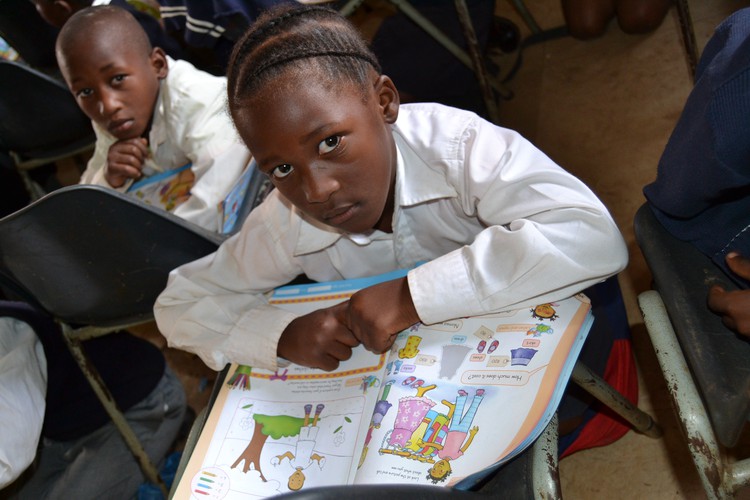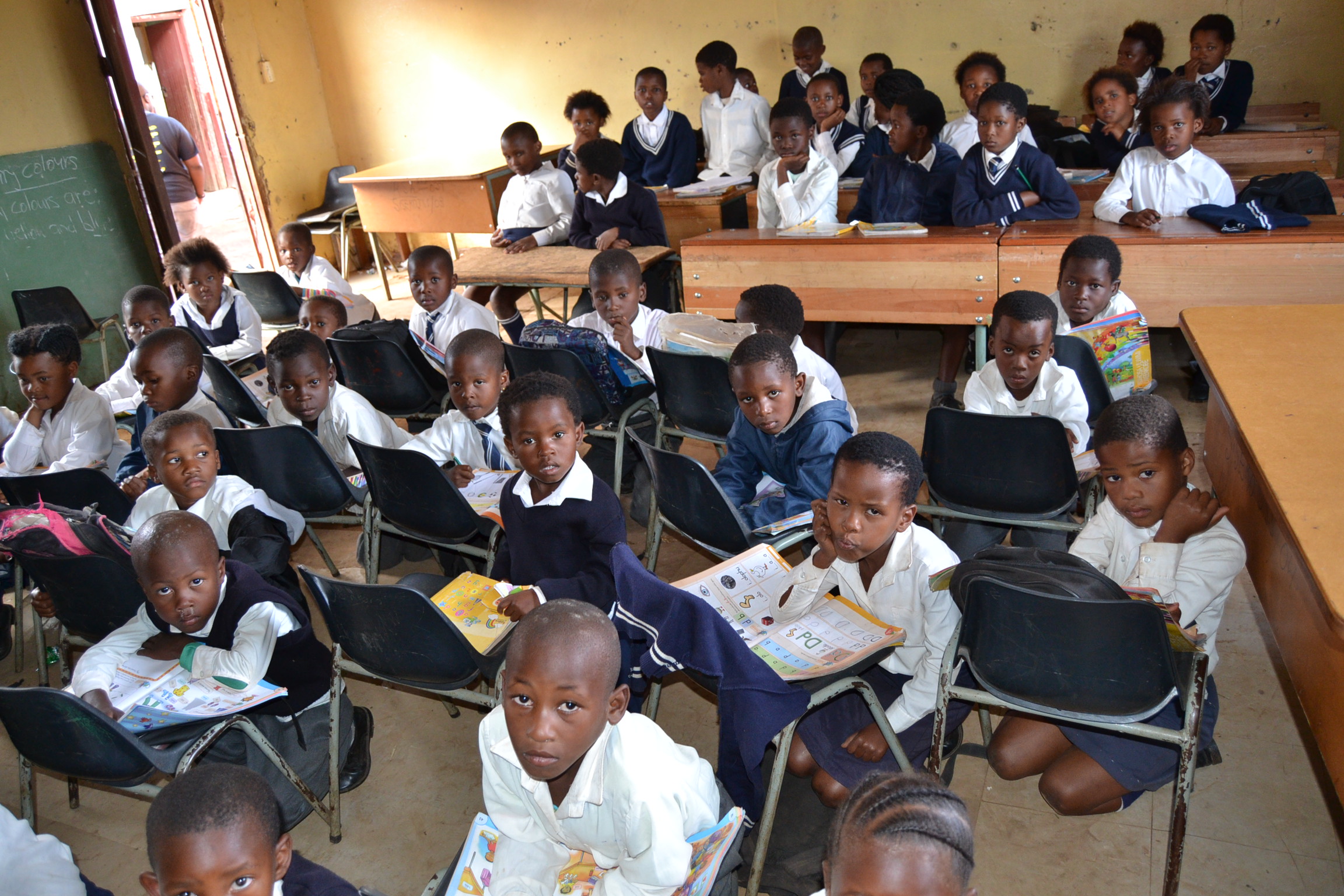
Mayisive Dume, 6, says she would love to have her own desk. Photo: Nombulelo Damba-Hendrik
4 May 2017
Grade one learners at Isiseko Junior Secondary School in Centane Nontshinga village near Kei Mouth kneel on the floor and use chairs as desks because of lack of furniture.
The school was started by parents in 1982 when three rondavels were built by volunteers from the community. In 1991 each household donated R50 to build classrooms. After the three blocks were finished, learners were moved to the three classrooms.
Three years later, parents went back to the drawing-board. This time it was decided that each house would donate R100 to build another three blocks. Since then, not a single classroom has been built by the Eastern Cape Department of Education.
Teachers and members of the School Governing Body members told GroundUp that when they asked the department to build them more classrooms, the department built toilets, far from the classrooms. The small fence the parents managed to buy only surrounds the six classrooms and a shack used by grade R, leaving the toilets outside.

Teachers and SGB members said since 2002 the department had told them they were on a waiting list for a new school. But school principal Vusumzi Jaxa said when he phoned the department on 25 April about the delays, he was told his school was no longer on a waiting list. “The person made it very clear that there’s no new school going to be built here,” he said.
According to the provincial education department’s director of infrastructure delivery Tsepo Pefole, the Eastern Cape had an infrastructure backlog of R52bn and needed at least R6bn a year for the next 17 years. But at the moment, he said, the department had only R1.5 billion a year. Pefole said the department was working to fix all schools which needed to be fixed.
Siseko is the only junior secondary school in Nontshinga village, and has 256 learners. With only six classrooms all grades except grade seven are combined with other grades.
GroundUp visited the school last Wednesday with Equal Education. All the classrooms are leaking, some have broken windows and doors. The school relies on rain water from two tanks.
The grade one class has 19 learners. Children sit in the front of the class, on their knees, and use a chair as a desk. In the same classroom, the grade four learners have desks.

Mayisive Dume, 6, is in grade one. She told GroundUp that she put her school bag on the floor to kneel on, or sometimes knelt on a book. “I would love to have my own desk, just like grade four,” she said.
Her teacher, who teaches grades one and four, did not want to be named. She told GroundUp that she sent the grade ones outside so she could teach grade four, but she still had to watch the grade one learners. And because the toilets are far from classrooms, she and the other teachers had to accompany learners when they went to the toilet. Sometimes, she said, she wished she could just pack up and leave because of the problems teaching combined classes.